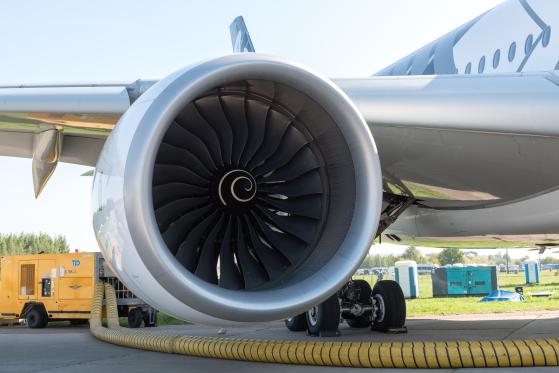In the depths of the Covid-19 pandemic, Rolls-Royce (LON:RR) faced severe financial distress, leading the company to seek shareholder support and cut 9,000 jobs to survive. Fast forward to the present, and Britain’s flagship engineer has staged a dramatic recovery.
The company recently reported a 74% jump in half-year profits, resumed dividend payments, and even gifted 150 shares to each employee.
This transformation marks one of the most notable turnarounds in recent UK corporate history.
Share price performance and market reaction
Since Tufan Erginbilgiç took over as CEO in January 2023, Rolls-Royce shares have more than quadrupled, significantly outperforming major indices.
The stock price has surged from around £80 to over £340, reflecting strong investor confidence in the company’s recovery and prospects.
Source: TradingView
The company’s market capitalization has increased substantially, demonstrating renewed investor interest and optimism.
Rolls-Royce’s financial turnaround
Rolls-Royce’s financial performance has shown remarkable improvement. The company reported a 74% increase in half-year profits, reaching £1.2 billion.
This puts Rolls-Royce more than halfway towards its ambitious annual profit and cash flow targets set by Erginbilgiç for 2027.
The company now expects to achieve more than 75% of its target of up to £2.8 billion in annual operating profit and more than 65% of its goal of up to £3.1 billion in free cash flow by the end of this year.
Erginbilgiç’s strategic changes have been pivotal. He implemented significant management restructuring, reducing duplication and cutting middle management, which has helped streamline operations and improve efficiency.
Civil aerospace: A key driver of growth
Rolls-Royce’s civil aerospace division has been a major contributor to its turnaround. The division, which builds engines for the world’s largest passenger aircraft, reported engine flying hours returning to pre-pandemic levels.
Margins in the business rose 18% over the past six months, indicating strong recovery and operational efficiency.
The company has renegotiated loss-making contracts with customers to enhance profitability and plans to invest over £1 billion in the coming years to improve the durability and performance of its Trent family of engines.
This investment aims to sustain long-term growth and competitiveness in the civil aerospace sector.
Diversified business units: Power systems and defense
Rolls-Royce’s power systems unit, which manufactures diesel and gas engines for ships and power generators for data centers, has also shown significant recovery.
The division’s underlying operating profit grew by 56% to £189 million in the first half of the year. The underlying operating margin rose to 10.3%, with expectations of further improvement in the second half.
In the defense sector, Rolls-Royce has secured notable contracts and is expected to benefit from increased government spending, including on the Aukus submarine program with Australia and the US.
These contracts are likely to contribute to sustained revenue growth in the defense unit.
Strategic challenges and future prospects
One of the key strategic challenges for Rolls-Royce is re-entering the lucrative short-haul narrow-body aircraft market.
The company left this sector over a decade ago but has started work on a demonstrator of its Ultrafan engine, designed for next-generation narrow-body jets.
Erginbilgiç has expressed a preference for partnering with another company to develop this engine, which could mitigate risks and share development costs.
Despite strong performance, Rolls-Royce faces potential challenges, including industry-wide supply chain issues, which could impact cash flow by up to £200 million this year.
Early signs of pressure on airline yields could also affect demand for air travel. The true test of Erginbilgiç’s transformation will come with the industry’s next downturn, assessing whether the company can maintain its resilience.
What do analysts say about the Rolls-Royce stock?
Most analysts have reiterated their “buy” ratings on Rolls-Royce, citing the company’s strong performance and growth potential.
The stock is currently trading at a multiple of around 25 times next year’s earnings, reflecting high investor expectations.
Rolls-Royce’s turnaround has been driven by strong leadership, strategic changes, and a focused approach to improving operational efficiency.
The company’s civil aerospace division has shown significant recovery, and its diversified business units have rebounded. Despite potential challenges such as supply chain issues and pressure on airline yields, analysts remain optimistic about Rolls-Royce’s future growth.
The true test of the company’s resilience will come with the next industry downturn, determining whether Erginbilgiç’s transformation efforts have created a more robust and sustainable business.
This article first appeared on Invezz.com
